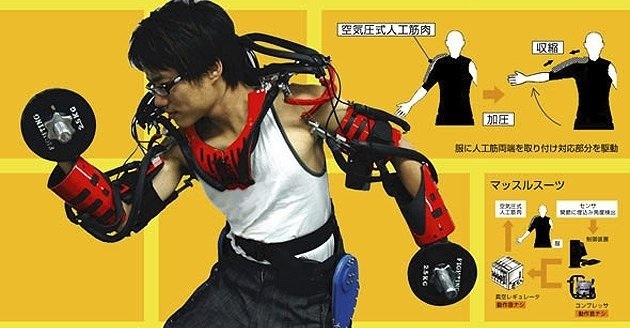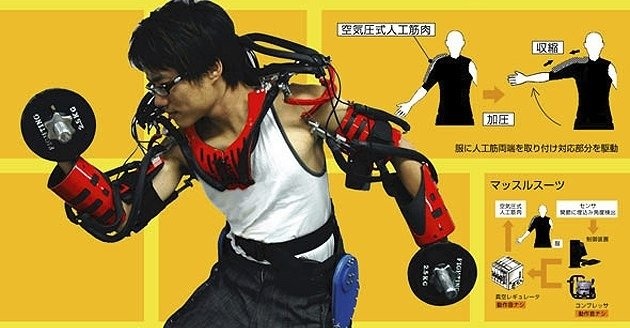Robotic Muscle Suit
When it comes to robotic exoskeletons, we are probably most familiar with them when thinking about the hulking beasts seen in


When it comes to robotic exoskeletons, we are probably most familiar with them when thinking about the hulking beasts seen in Alien or other sci-fi blockbusters. New advances in technology now suggest, however, that we may actually see consumer exoskeletons to aid paraplegics before 2014.
A new entry to the consumer exoskeleton sector has surfaced aiming to be the domestic muscle suit of the future — it's capable of letting its users lift 40kg of rice as though it were as light as a cotton sack. Developed by Hiroshi Kobayashi of Tokyo University of Science in Japan, this lightweight (9kg total weight) exoskeleton differs from previous attempts to bring mech-robots to market. Previous such forays foundered on the expense involved in powering mechanical suits. Hiroshi's consumer cybernetics instead utilise pneumatics – compressed air – as part of a pneumatic artificial muscle (PAM) system.
Serious consideration has been given to intuitive use, bodily acceleration and voice commands which supply the principal ways of operating the suit. This is essential given that the target market is Japan's rising elderly population: over 30% will be over 65 by 2025. The exoskeleton will be available to rent from ¥15,000 (£115) per month, although Japan's health insurance will cover 90 per cent of the charge in many cases.
Along with the Ekso project we mentioned back in January, this is an potentially revolutionary concept and we look forward to seeing how it develops.



Discussion